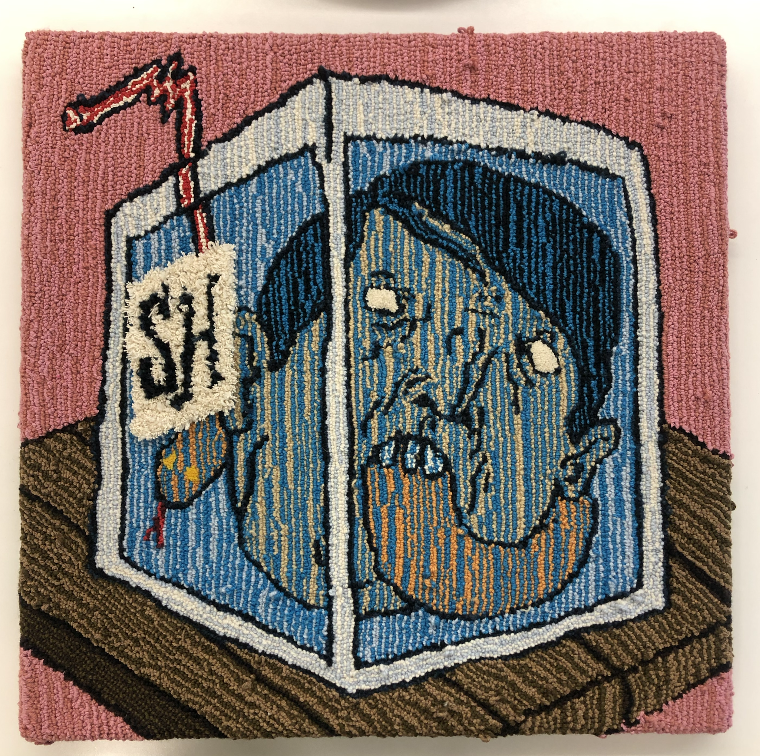This surreal feeling matched the impending atmosphere of this opening night. St Charles projects was a relatively new gallery in Baltimore before the 2020 pandemic enveloped its progress, and like most of these smaller institutions, they have had a stop-start reopening since.
With its founders, Domenic Terlizzi and Christine Stiver (director and co-director respectively), moving to NYC in the interim of the great shutdown, the future of the gallery remains in limbo with the building’s recent sale to Johns Hopkins University, an institution that had historically used the building for sleep studies. Like many smaller institutions in Baltimore, from bands to individual performers to galleries, the gallery and its community is beholden to larger forces. The final performance always feels imminent, yet can be overcome if more collaborators can be found. In speaking to Terlizzi, that was the energy behind the exhibition, It’s Never Over.
Half possible farewell pop-up, half “Post”-Covid reunion, It’s Never Over drew on Terlizzi and Stiver’s extended network of collaborators, friends, contemporaries developed over the history of the gallery since it’s 2015 opening, featuring artists working at multiple points of their careers from within Baltimore and New York. The work drop-off and install happened in a single night, a massive undertaking starting ominously enough on Friday the 13th.
This quick turnaround, paired with the volume of work and the nature of the space, created an immersive experience at the packed opening. Like many of Baltimore’s smaller artist-run spaces, the aesthetic preferences of the curator were palpable, and this idiosyncrasy gets stronger if the artists running the space are as prolific as Stiver and Terlizzi.
Presented as an army of smaller works, most of which were pattern-heavy with muted secondary colors and a consistent dark warmth, the show featured a variety of media including printmaking, drawing, painting, mixed media collage, and sculpture—a staggering 88 pieces in total. The exhibition as a whole teased into abstraction, with some tactile emphasis on craft, such as in the work of Danni O Brian’s hanging wall piece “Stoney Baloney Jewelry Box” and Joe LeTourneau’s tufted rug cartoon panel “Potion #5.”
Other works, like Amy Stober’s protruding drum-shaped wall hanging, “A Few Of My Favorite Things,” blurred sculpture and illustration, featuring small diorama paintings on the outside of the drum shape, some depicting interiors reminiscent of Van Gogh’s “Bedroom In Arles.” Works from artists Pol Morton, Jon Duff, Chris Retina, and Sarah Grass dove fully into illustration, depicting highly rendered subjects. Other works, such as Joyce Yu Jean Lee’s stained glass rollercoaster, and Katherine Mann’s monochromatic prints leaned heavily into the process of the work. A particular standout was Alex Ebstien’s abstraction, cut from yoga mats, creating an oddly comforting texture in its new context.



















